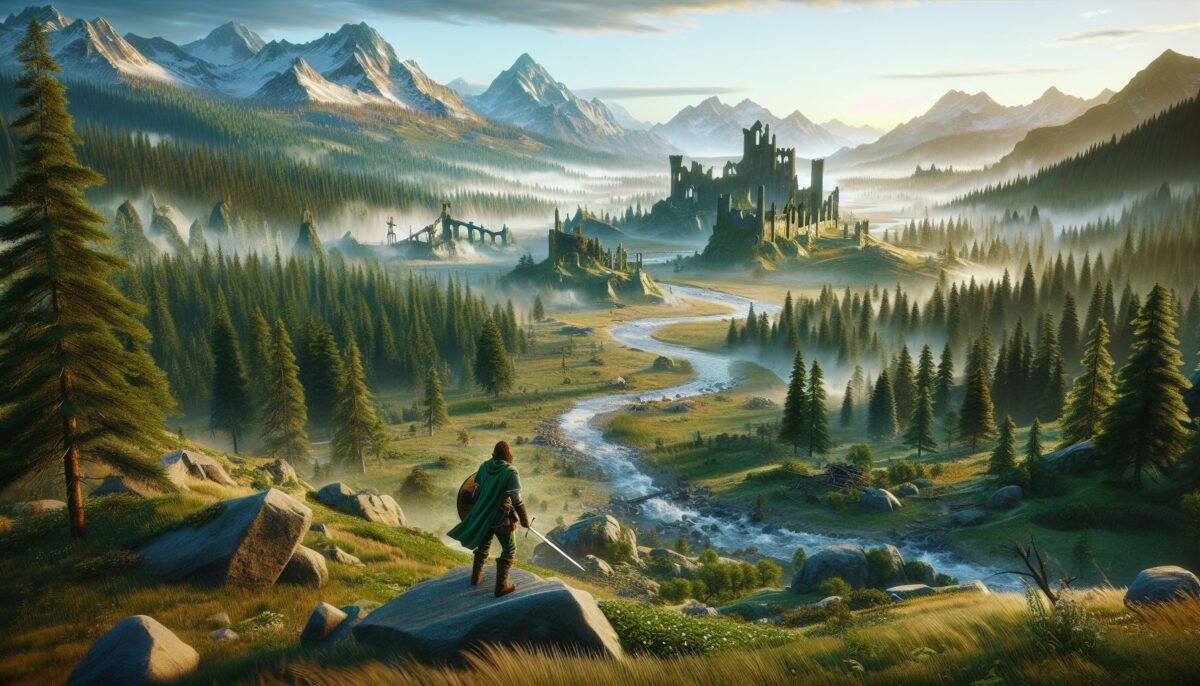Venture into the sprawling lands of Hyrule with “The Legend of Zelda: Breath of the Wild,” a game that has redefined the open-world genre and captured the hearts of gamers around the globe. This action-adventure title from Nintendo’s iconic franchise was released for the Wii U and Nintendo Switch platforms, and it presents a breathtaking experience that both series veterans and newcomers alike can immerse themselves in. So, grab your trusty sword and shield as we dive into this in-depth game review of one of gaming’s most celebrated adventures.
A Breath of Fresh Air in Open-World Gaming
From the first moment you step into its vast open-world, “Breath of the Wild” sets a new standard for freedom in video games. Players assume the role of Link, the series’ hero, who awakens from a century-long slumber to a Hyrule overrun by the malevolent force of Calamity Ganon. Unlike many narrative-driven Zelda games before it, “Breath of the Wild” offers little in the way of guidance, instead encouraging players to explore at their own pace.
The game’s open-ended nature feels like a breath of fresh air, offering a sandbox that is teeming with secrets, puzzles, and challenges. The meticulous attention to environmental detail ensures that whether you’re scaling a high mountain, crossing arid deserts, or braving through lush forests, the world of Hyrule is compelling and rich with a life of its own.
In Harmony with Nature: The Gameplay Mechanics
One of the game’s significant innovations is its physics-based gameplay, which plays a vital role in everything from combat to puzzle-solving. Link can wield a varied arsenal of weapons, each with its own unique properties and durability. This pushes players to strategize and often improvise during engagements with the world’s many foes.
The environment responds dynamically to your actions—cut down a tree to create a makeshift bridge, use metal objects to conduct lightning during a storm, or set a field ablaze to spread chaos among enemy ranks. Seasons change, weather fluctuates, and wildlife reacts realistically to the player’s presence.
Cooking is another gameplay element that feels organically woven into the fabric of survival in Hyrule. Ingesting prepared dishes grants Link buffs and can be critical to success when facing more robust challenges, adding a layer of depth to resource management.
Visuals and Sound: An Aesthetic Masterpiece
“Breath of the Wild” does not push the boundaries of graphical fidelity when compared to some titans of the industry—after all, the Nintendo Switch isn’t designed to compete on raw hardware power. Despite this, the art direction is nothing short of an aesthetic triumph. The use of vibrant colors, the cell-shaded art style, and the stunning atmospheric effects all come together in a cohesive and visually delightful package that is as mesmerizing as it is timeless.
The soundscape is equally praise-worthy, with subtle melodies that underscore the tranquility or peril of the surroundings. Voice acting, a rarity in Zelda games, is present and contributes to pivotal story moments without overshadowing the game’s overall minimalist approach to sound, letting the environmental noises take center stage.
Shaking up Tradition: The Shift from Traditional Zelda Formula
“Breath of the Wild” is a significant departure from the series’ traditional formula. It eschews the linear progression and compartmentalized dungeons for a more integrated experience. Shrines scattered throughout the world serve as mini-dungeons, each presenting its unique trials that test your wit and reflexes.
This departure has been both lauded for its innovation and critiqued for straying from the revered puzzle-dungeon narrative that has been a mainstay of previous titles. Some fans miss the elaborate, themed dungeons, though the goodwill towards the game’s daring reinvention is generally substantial.
Challenges and Controversies: Where It Falls Short
For all its groundbreaking achievements, “Breath of the Wild” is not without its shortcomings. Framedrops can occur, mainly when the game is played in docked mode on the Switch, leading to performance issues during busy scenes. Additionally, the weapon degradation system, while encouraging variety in combat, can be a source of frustration when favorite weapons shatter mid-battle.
Another point of contention comes from the title’s narrative structure. Traditional storytelling takes a backseat to exploration, leaving some players desiring a more robust, engaging storyline. Moreover, the game’s vastness may overwhelm players who prefer more structured experiences. The lack of conventional Zelda dungeons leaves a gap that the many shrines, despite being clever and varied, cannot entirely fill for every fan.
Final Verdict: “The Legend of Zelda: Breath of the Wild”
“The Legend of Zelda: Breath of the Wild” stands as a monumental achievement in game design. It is a testament to the marvelous things that can happen when a developer breaks the mold and reimagines what a game can be. Exploration, experimentation, and excitement are the pillars of this title, with the player’s curiosity always rewarded with something intriguing just over the next ridge.
While it may not satisfy everyone’s taste, particularly fans who miss the traditional Zelda formula, its impact on the open-world genre and gaming as a whole is undeniable. “Breath of the Wild” is a must-play for any gamer or enthusiast eager to experience a world brimming with adventure, mystery, and beauty at every turn.
